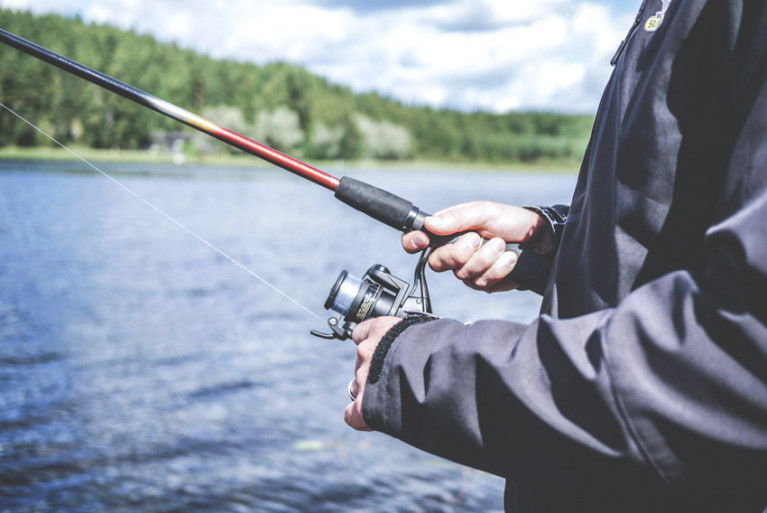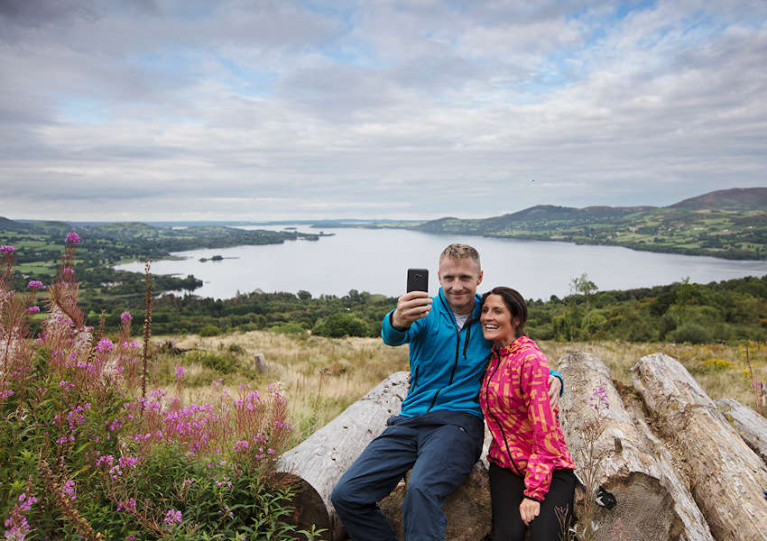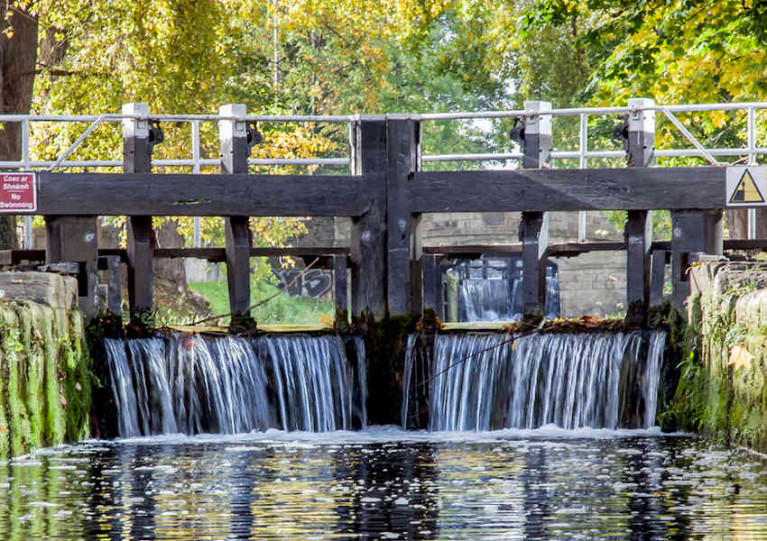Displaying items by tag: Leave No Trace
Leave No Trace Ireland Teams Up With Roz Purcell to Launch 2023 Campaign Urging Care and Respect for Our Outdoor Spaces
Leave No Trace Ireland — Ireland’s only outdoor ethics programme, which promotes the responsible use of the outdoors — has launched its fourth national awareness campaign urging the public to enjoy our inland waterways, coastal areas, beaches and other outdoor spaces with care and respect to protect wildlife and fragile natural ecosystems.
This year, the #LoveThisPlace campaign will feature as campaign ambassador Roz Purcell, a well-known presenter, broadcaster, content creator and founder of The Hike Life.
Members of the public will be urged to make a promise to #LoveThisPlace, confirming their love of the outdoors with simple, positive actions to protect and respect outdoor spaces.
This year’s campaign will culminate in a day of environmental action on National ‘Love This Place’ Day on Friday 28 July which coincides with World Nature Conservation Day.
Speaking at the launch of the Love This Place campaign on Tuesday (6 June), Roz Purcell said: “I’m outside quite a lot as part of my hiking community The Hike Life so I know why it’s so important to look after the outdoors.
 Leave No Trace Ireland chief executive Maura Kiely with Malcolm Noonan, Minister of State for Heritage | Credit: Finbarr O’Rourke
Leave No Trace Ireland chief executive Maura Kiely with Malcolm Noonan, Minister of State for Heritage | Credit: Finbarr O’Rourke
“Everyone is responsible for taking care while they’re enjoying nature. I hope you’ll all join me in making a promise to Love This Place and Leave No Trace on Friday 28 July.”
The campaign will run through June, July and August and will focus on promoting five key collective goals and simple actions for people to enjoy the outdoors responsibly:
- Keep Ireland litter-free
- Protect our wildlife
- Stick to the path to protect our land and coast
- Be responsible with our dogs
- Embrace our island and cultural heritage
The Love This Place 2023 campaign is a joint initiative with Leave No Trace Ireland's core partners including Fáilte Ireland, Sport Ireland, National Parks and Wildlife Service, Department of Rural and Community Development, Dublin City Council, Office of Public Works, Coillte and Waterways Ireland.
The campaign is also supported for the first time this year by Clare County Council, Fingal County Council, Galway County Council, Kilkenny County Council, Mayo County Council, Wicklow County Council and Dún Laoghaire-Rathdown County Council.
Further information and guidance for individuals, communities and organisations is available from the Leave No Trace Ireland website.
The Loughs Agency has been announced as a new Corporate Bronze Member of Leave No Trace Ireland.
In partnering with the organisation, the cross-border agency will reinforce its calls for water users to become environmental stewards in the Foyle and Carlingford catchment areas, while its educational initiatives will highlight the organisation’s ethos to school pupils.
Sharon McMahon, Loughs Agency chief executive said: “We are delighted to become Leave No Trace Ireland’s newest Corporate Bronze Member. The values of both organisations are closely aligned as we share the common goal of protecting and conserving our natural environment.
“It is now more important than ever for all water users, ranging from anglers to those partaking in recreational activities such as sailing, canoeing and coastal camping, to ensure they abide by the seven key principles outlined by the organisation.
“Disposing of waste properly and minimising the effects of fire are two of these, which will form part of our environmental messaging moving forward.
“We are excited to work with Leave No Trace Ireland and we’re optimistic that through meaningful partnerships such as this, we can raise awareness of our roles and responsibilities in ensuring that everyone gets to enjoy the natural world for many years to come.”
The Loughs Agency says it will now begin implementing Leave No Trace principles into its work, and through its membership will embed the ethos further into its educational initiatives.
Waterways Ireland and Leave No Trace Ireland Are Asking Visitors to Ireland’s River and Canals to ‘Love This Place’
This summer, Waterways Ireland has partnered with Leave No Trace Ireland to bring the ‘Love This Place’ message to Ireland’s inland waterways.
The Love This Place campaign is a nationwide effort being run by Leave No Trace Ireland in conjunction with nine partner organisations and 80 supporting organisations from the sports, tourism and outdoor activities sectors, sharing the message of responsible outdoor recreation.
Across the island of Ireland there are over 1,000 km of inland navigable waterways for everyone to enjoy — from a walk under the leafy canopies of the River Barrow towpath, to a cycle along the banks of the Grand Canal.
Waterways Ireland says it is committed to the Leave No Trace principles which are integral to its work, including education and training programmes.
“By working together, we can all make a difference and reduce the pressure points on our environment and outdoor spaces from recreation and leisure activities,” it says.
The ‘Love This Place’ initiative calls on the public to help:
- prevent littering and its impact on urban, rural, and marine environments
- protect the many different habitats that make up our wonderful natural environment
- prevent the destruction caused by wildfires
- by being responsible for proper management of our dogs when outdoors
- by avoiding noise pollution and its impacts
As you get out and about this summer, Waterways Ireland have three tips to help everyone Love This Place:
Disinfect: We can all be habitat heroes and play our part to protect our habitats by following the Check - Clean - Dry - Disinfect method. This way, we make sure that we prevent the spread of invasive species between waterways and keep our waters healthy.
Be Considerate of Others: Whether it’s keeping the dog on a lead, cleaning up after them, keeping our music to ourselves or parking so as not to block access roads or driveways, there are many ways we can share our outdoor spaces and recreational areas responsibly.
Dispose of Litter and Waste Properly: Whatever we bring outdoors with us, be prepared to bring it home again. Rubbish or leftover food impacts on the environment, animals, waterways, and other visitors. Whatever your plans for the outdoors, on land or on the water, bring a bag to clean up and Leave No Trace.
New Responsible Outdoor Recreation Guide for Angling Launched
Inland Fisheries Ireland (IFI) has teamed up with Leave No Trace Ireland to launch an outdoor recreational guide for angling based on the 7 Principles of Leave No Trace.
As custodians of our natural fisheries resource, anglers can refer to this short guide on how they can minimise the impact their fishing trip can have on the environment.
The guide is also a useful checklist for anyone enjoying the outdoors with the 7 Principles being key reminders of how to reduce the effects we have on the natural world. They are:
- Plan Ahead and Prepare
- Be Considerate of Others
- Respect Farm Animals and Wildlife
- Travel and Camp on Durable Ground
- Leave What You Find
- Dispose of Waste Properly
- Minimise the Effects of Fire
Suzanne Campion at IFI said: “320,000 Irish people enjoy fishing in Ireland and this guide will help them with their role in protecting the environment.
“Anglers are important stewards over the waters they fish. The guide we have prepared with Leave No Trace Ireland outlines what to consider before going on an angling trip.
“The angling community have a role in protecting the environment they fish in and to help nurture it for future generations to enjoy our fisheries resource.”
Maura Kiely, CEO of Leave No Trace Ireland, said she is delighted at the partnership for this new guide and added: “We have tailored the 7 Principles of Leave No Trace to work as a checklist for anglers when they are embarking on a fishing trip.
“Anglers are caretakers over the environment they fish in and they understand the need for healthy aquatic systems for fish populations to thrive. The guide will help anglers to make decisions that will minimise any impacts on nature when fishing.’
The guide is available on the IFI website HERE.
New ‘Leave No Trace’ Campaign Aims To Tackle Scourge Of Litter In Ireland’s Great Outdoors
Waterways Ireland is part of a new Government campaign promoting responsible behaviour when enjoying the outdoors and help turn back a recent increase in litter hotspots, particularly in scenic locations.
Love This Place, Leave No Trace is a joint initiative with Leave No Trace Ireland alongside the National Parks and Wildlife Service, Inland Fisheries Ireland, Fáilte Ireland, Coillte and the OPW.
The campaign comes after what’s been described as “a notable increase” in littering throughout the country in recent weeks since the easing of coronavirus-related movement restrictions.
“We need to take action now to halt the scourge of litter in our beautiful countryside,” said Maura Kiely, chief executive of Leave No Trace Ireland.
“Everyone needs to take responsibility. Littering is a threat to our fragile ecosystems and a moment of laziness can have long-term effects.
“An aluminium can takes 400 to 500 years to break down; a plastic bag can take up to 20 years. A discarded plastic bottle, meanwhile, will last for a million years.”
‘As more of us ‘make a break for it in Ireland’ this year, let’s respect the environment which is one of Ireland's greatest assets’
Catherine Martin, Minister for Media, Tourism, Arts, Culture, Sport and the Gaeltacht, welcomed the new campaign.
“We all love to exercise and be active in our scenic outdoor spaces so let’s ensure they remain accessible to all by Leaving No Trace and keeping our natural environment litter-free.
“As more of us ‘make a break for it in Ireland’ this year, let’s respect the environment which is one of Ireland's greatest assets.”
Minister of State for Heritage and Electoral Reform, Malcolm Noonan, added: “Litter, disturbance to vegetation, water pollution, wildlife, livestock and other people are all indicators of the need to develop a national ethic that protects both natural and cultural heritage.
“I would encourage everyone to treat our natural heritage with the respect it deserves and to follow the principles of Leave No Trace.”
Leave No Trace issued its guidelines on how to be responsible in the outdoors earlier this year — and further details, including outdoor skills and tips for planning, are available from Leave No Trace Ireland HERE.
Leave No Trace Guidelines for Getting Outdoors Responsibly & Safely During Covid-19 Pandemic
Outdoor ethics programme Leave No Trace Ireland has published a set of simple guidelines for getting outdoors responsibly and safely amid the Covid-19 crisis.
“Now, more than ever, it is vitally important that collectively, we use the outdoors responsibly, taking care of each other and taking care of our local environs, our magnificent wildlife, our lands and waters,” the programme said.
“As seen in the media, overcrowding at popular outdoor beauty spots, lack of social distancing, increased disturbance of wildlife and vegetation, rubbish left behind, are all indicators that outdoor use is up but we are not caring for our outdoor spaces as we should be.
“Following Leave No Trace Guidelines ensures we are being collectively responsible in our use of outdoor spaces, protecting ourselves, our families, our fellow citizens and our incredible island.”
Leave No Trace Ireland’s guidelines are:
- Plan Ahead: Check weather, bring proper clothing and footwear, water and food. Park and walk responsibly.
- Expect Closures: Before leaving home, consider lack of usual facilities such as toilets, shops, cafes, restaurants.
- Stay Home or Local: Unwell? Don't go! Feeling well? Look for local trails, hidden gems, explore closer to home.
- Be Considerate: Maintain social distancing throughout the day. Keep group sizes small. There is plenty of space in the outdoors for everyone!
- Time and Place: Find those hidden gems, avoid peak times, avoid difficult routes. Adhere to HSE guidelines.
- Leave No Trace: Don't rely on or add to already overburdened services. Bring your own rubbish home.
- Be Dog-Responsible: Keep dogs under control. Mind out for young wildlife. Pick up and bring home dog waste.
Leave No Trace Ireland also reminds of its seven principles: prepare for spring weather conditions, stick to trails, dispose of waste properly, minimise fire impacts, leave what you find, keep a safe distance from wildlife, and be considerate of others.
If you are well, remain active through outdoor pursuits, but do your part and comply with the latest Government guidelines issued by the HSE in the Republic of Ireland and the HSC Public Health Agency in Northern Ireland. For more up to date information and advice about coronavirus (Covd-19), visit www2.hse.ie/coronavirus
For ideas on where to find inspiration for safe and responsible outdoor activities, see LeaveNoTraceIreland.org and share these ideas with friends and family on social media #LeaveNoTrace #WeLoveNature
































































